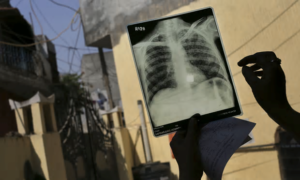

A new, shorter and safer drug regime for latent tuberculosis could help curb the global epidemic by increasing the numbers successfully treated and reducing the pool of infection, researchers believe.
Two groundbreaking studies, one in adults and the other in children, have trialled a less toxic drug than the one in current use worldwide for latent TB and cut the treatment time from nine months to four.
The research, pioneered by McGill University Health Centre in Canada, is set to change guidance around the world. One quarter of the global population is thought to have latent TB infection, but because of the long course of drugs currently used, which can have toxic effects on the liver, many go untreated and some suffer harm.
People infected with latent TB may not become ill themselves, but can transmit the infection to others who will. It is generally recognised that the chances of making real progress against the TB epidemic are slim unless the pool of latent infection can be reduced. There were an estimated 10.4m new cases of active TB in 2016 and 1.7 million people died from the disease, according to the World Health Organisation.
The standard treatment for latent TB at the moment is a lengthy course of isoniazid – for nine months in north America. The World Health Organization (WHO) recommends six months, largely for cost reasons. “Whether you take it for four, six or nine months, it has significant side effects, particularly on the liver,” said Dr Richard Menzies from McGill who led the new research. “You can have liver failure.
